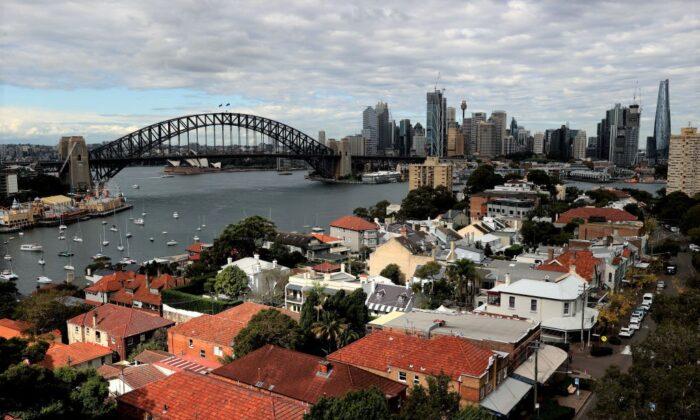A minister for Sydney could help solve the city’s housing deadlock, meet imposed targets and settle a political fight over higher-density living, an influential lobby group says.
Premier Chris Minns says Australia’s most populous city should accommodate more high-rise residential development in its business centre and he is prepared to take on long-time mayor Clover Moore to make it happen.
Mr. Minns said he would “give peace a chance”, but if necessary would resort to overriding local planning rules to drive more housing in the city centre.
“It’s like the mayor of New York City saying, ‘New York’s full, we can’t have any more buildings’,” Mr. Minns said on Sept. 29.
“It’s clearly not sustainable.”
Lobby group Business Sydney, which includes the City of Sydney and state government agencies among its members, says a dedicated minister should be appointed to lead the response to the housing crisis.
Executive director Paul Nicolaou said that minister could co-ordinate the dual responsibilities of government and council to increase the residential population of the city centre.
“Increasing the CBD population is vital to support the city’s economic recovery and to facilitate a pipeline of affordable housing so that essential workers can live closer to where they work,” Mr. Nicolaou said.
Mr. Nicolaou said Sydney could learn from Melbourne after authorities embarked on a strategy in the 1990s to deliberately increase its central population.
The Sydney city centre has about 28,000 residents, compared to 43,000 in the Melbourne centre, 2021 census figures show.
However, the broader Sydney council area is home to more than 210,000 residents, compared to fewer than 150,000 in Melbourne.
Ms. Moore said the city’s planning rules were flexible and already allowed residential development in its business centre.
“Already 30,000 people live here and there are nearly 5000 CBD dwellings in the development pipeline as we speak,” Ms. Moore said.
Ms. Moore said there were also no planning barriers to converting under-used office buildings to residential, although plumbing, ventilation and other issues could be expensive hurdles.
Increasing residential development in the city centre would not be the “silver bullet” to solving the housing crisis as those properties tended to be at the high end of the market, Ms. Moore said.
The independent state MP for Sydney, Alex Greenwich, backed the mayor, noting the broader council area was already on track to easily beat its agreed housing targets.
“We need a mix of commercial office and residential developments within the inner city, we’re the global commercial and economic centre of Australia,” Mr. Greenwich told AAP.
“We’re not the Gold Coast, where they just have towers of identical buildings next to each other.”
Mr. Greenwich said many recent residential developments in the city had come in state government-controlled precincts like Barangaroo, where pricey “penthouse style” apartments were being built rather than much-needed affordable dwellings.
But Mr. Minns said more residential development in the heart of the city would help bring Sydney in line with international cities like New York, London or Paris.
“It will add a 24-hour economy to an area that’s really only vibrant during business hours,” Mr. Minns said.







